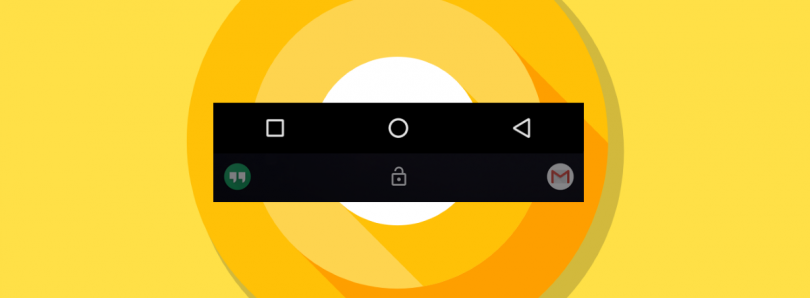Android Oreo has just launched, and with it come a set of various new features, optimisations and new looks. With improvement comes new APIs, and thus more unofficial goodies that with some tinkering we can access. You can install the system image now, and what's more you can customize the navigation bar, just like you could on the developer previews! The navigation bar modification existed even in Android Nougat hidden away in plain sight, but was made accessible to users for a while in the first two Android O Developer Previews only for it to be removed along with other tuners with the commit message stating "they aren't quite there yet".
Thankfully, it is still possible to edit the navigation bar just like in the developer previews (and later, Nougat)! Only the user facing menu option was removed, but it's actually still entirely accessible if you know how to call it via adb (or can put up with using a third-party app).
This tutorial is aimed at Android Oreo users, however this method and app also works on Android Nougat. Android Oreo is only available on the Google Pixel, Pixel XL, Pixel C, Nexus 6P, Nexus 5X and Nexus Player for now.
Customize the Navigation Bar in Android Oreo
We recommend you install Custom Navigation Bar Tuner from the Google Play Store, as it provides a nice GUI front-end for the navigation bar customization tuner that was removed from the developer previews (and offers way more features to boot). If you don't have root access, you'll need to download either Minimal ADB & Fastboot or the official Google binaries to enable the required WRITE_SECURE_SETTINGS permission for the application.
To do so, you'll need to first enable USB Debugging by going to the Developer Options menu. If you don't see Developer Options, scroll down to "About" and tap "Build number" seven times until the "You are now a developer" toast appears. Back out and above "About" will be the "Developer options" menu. Enter this and enable USB Debugging. Launch adb from your computer by pressing shift + right click in the same folder containing your adb files, then choosing to "open command prompt here" if you're on Windows. For Mac and Linux users, you'll need to open terminal then cd to the directory where you downloaded the files. Follow the instructions in the app to grant the appropriate permissions.
Re-arrange the navigation buttons
You can re-arrange the navigation buttons if you prefer them in a different order. Simply enter the menu titled "Navigation bar" and enter experimental tweaks.
Other uses
There is a lot you can do with this application and the use of Tasker! Here are two examples:
- How to Add Media Playback Controls to the Nav Bar when Playing Music
- How to Add Left/Right Keyboard Cursors to the Nav Bar during Text Input
The app allows full Tasker integration, so you can program them in any way you like. Try customizing your nav bar out and let us know what uses you are able to come up with!

